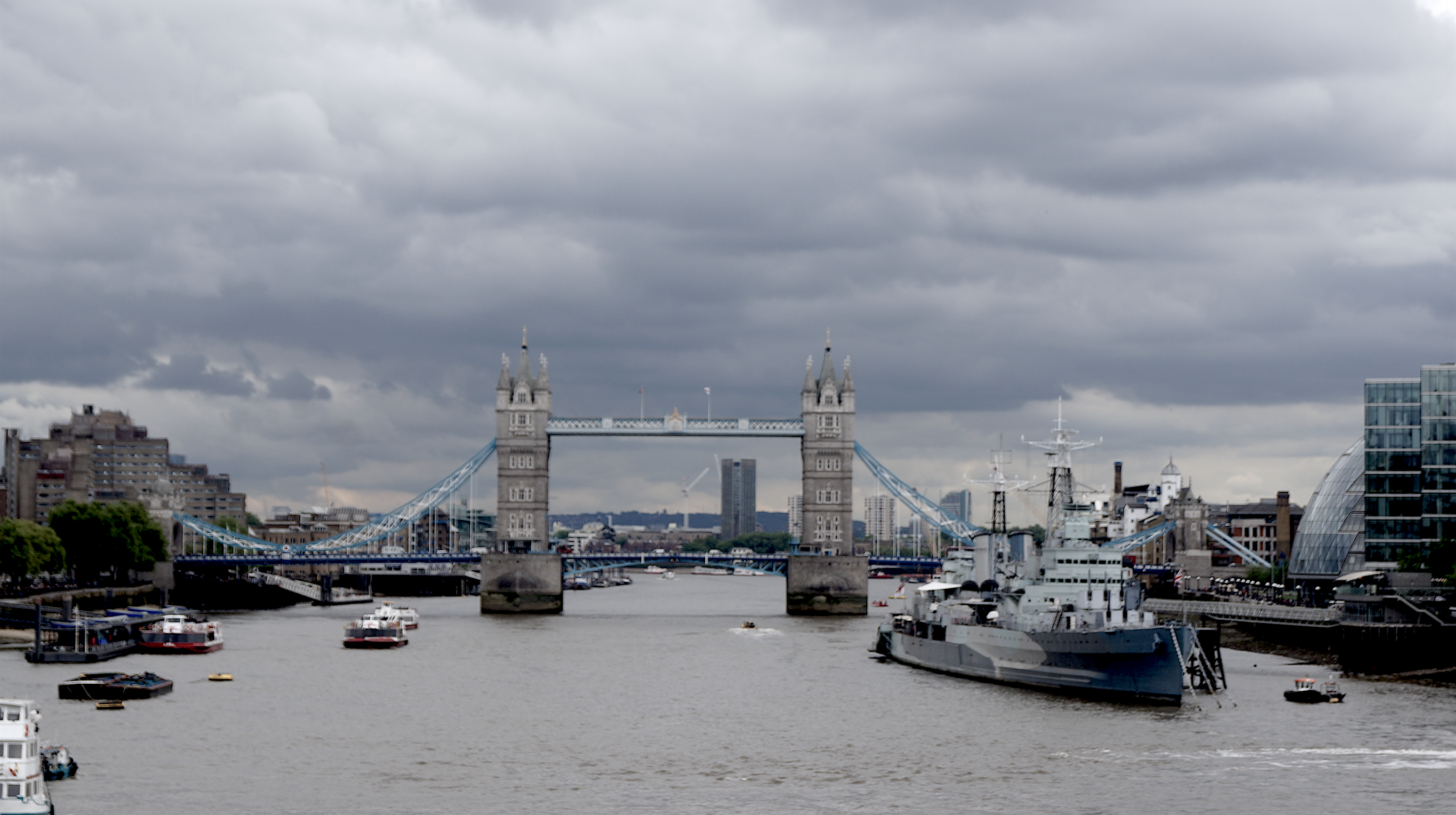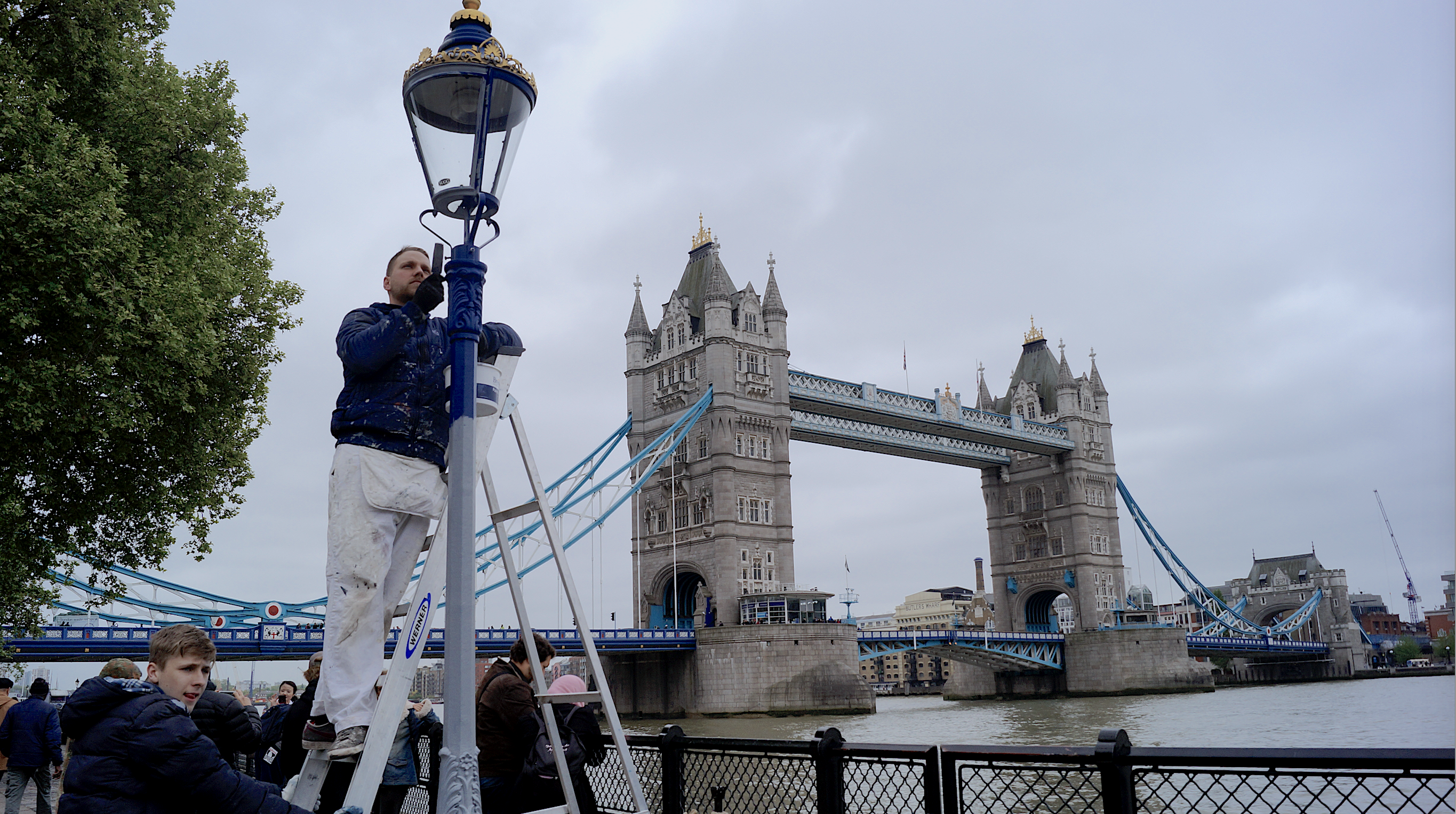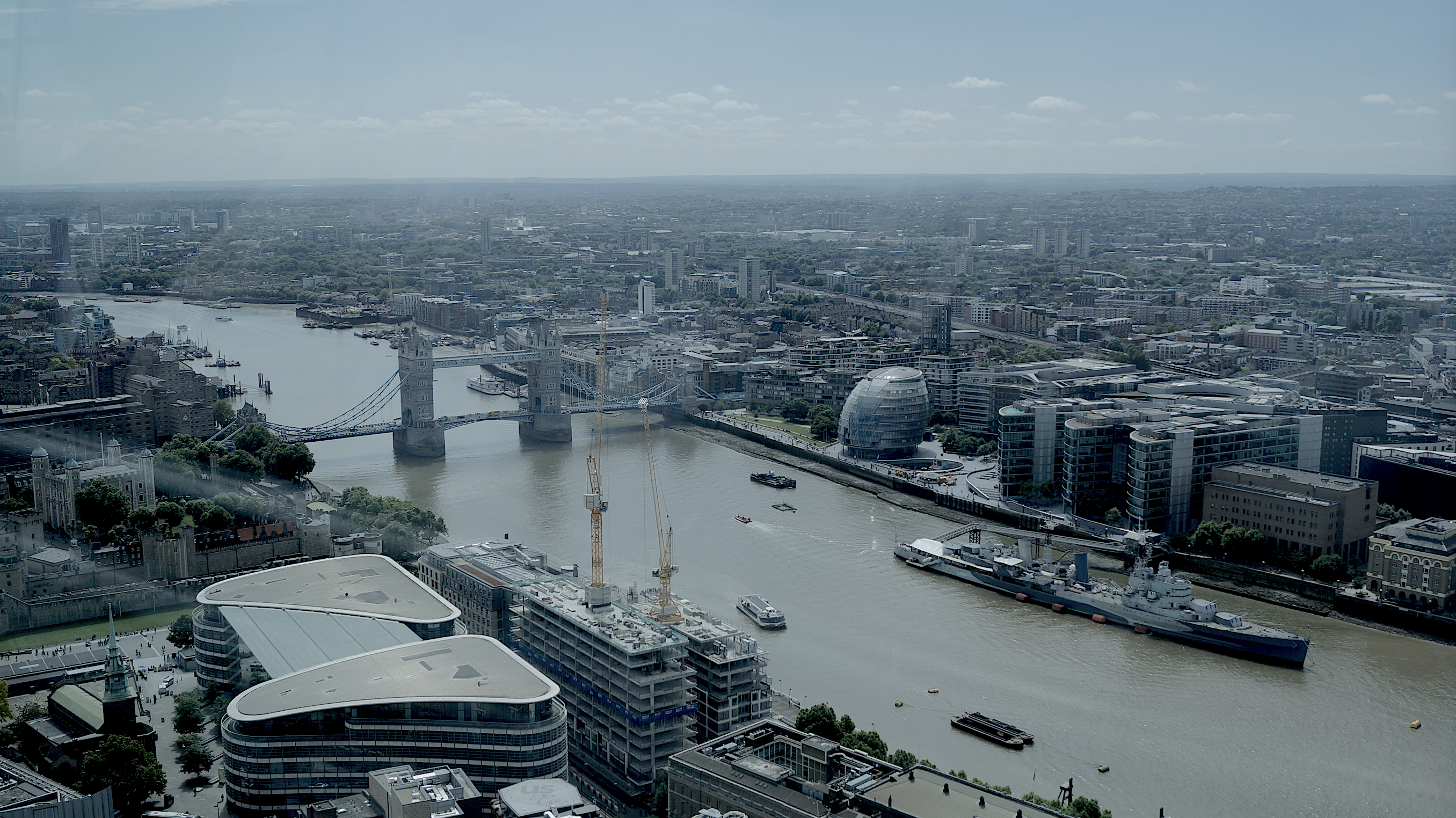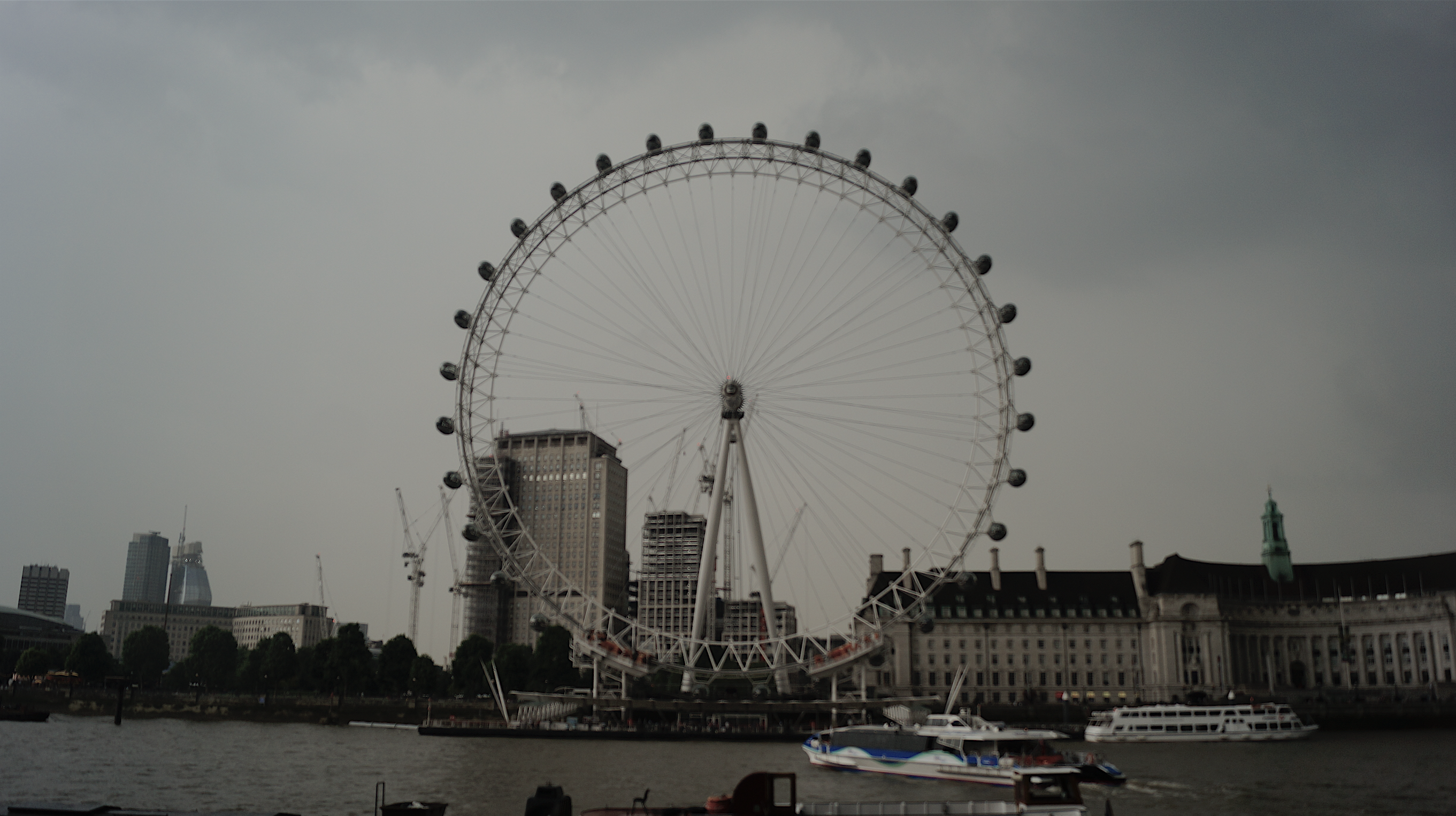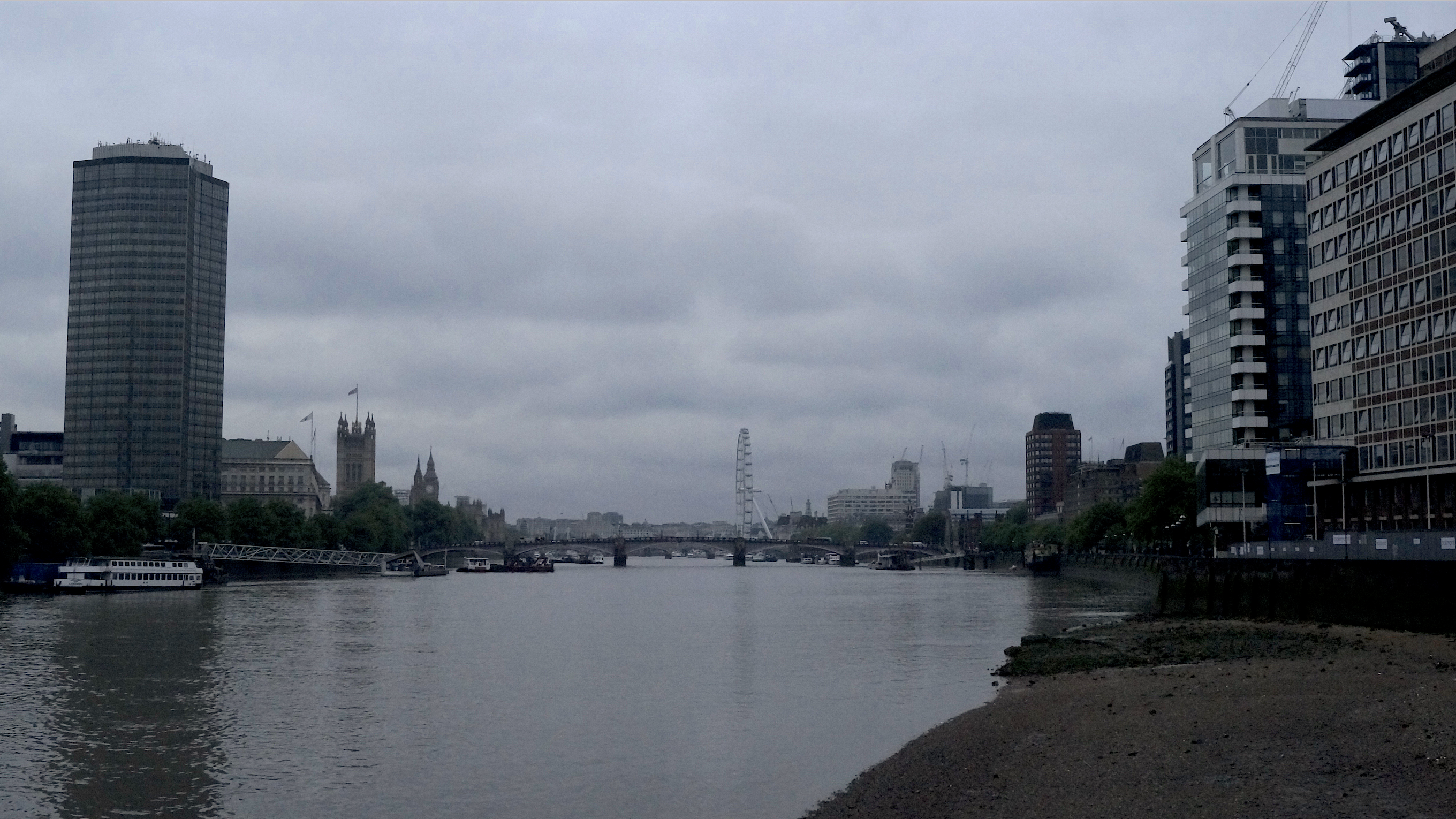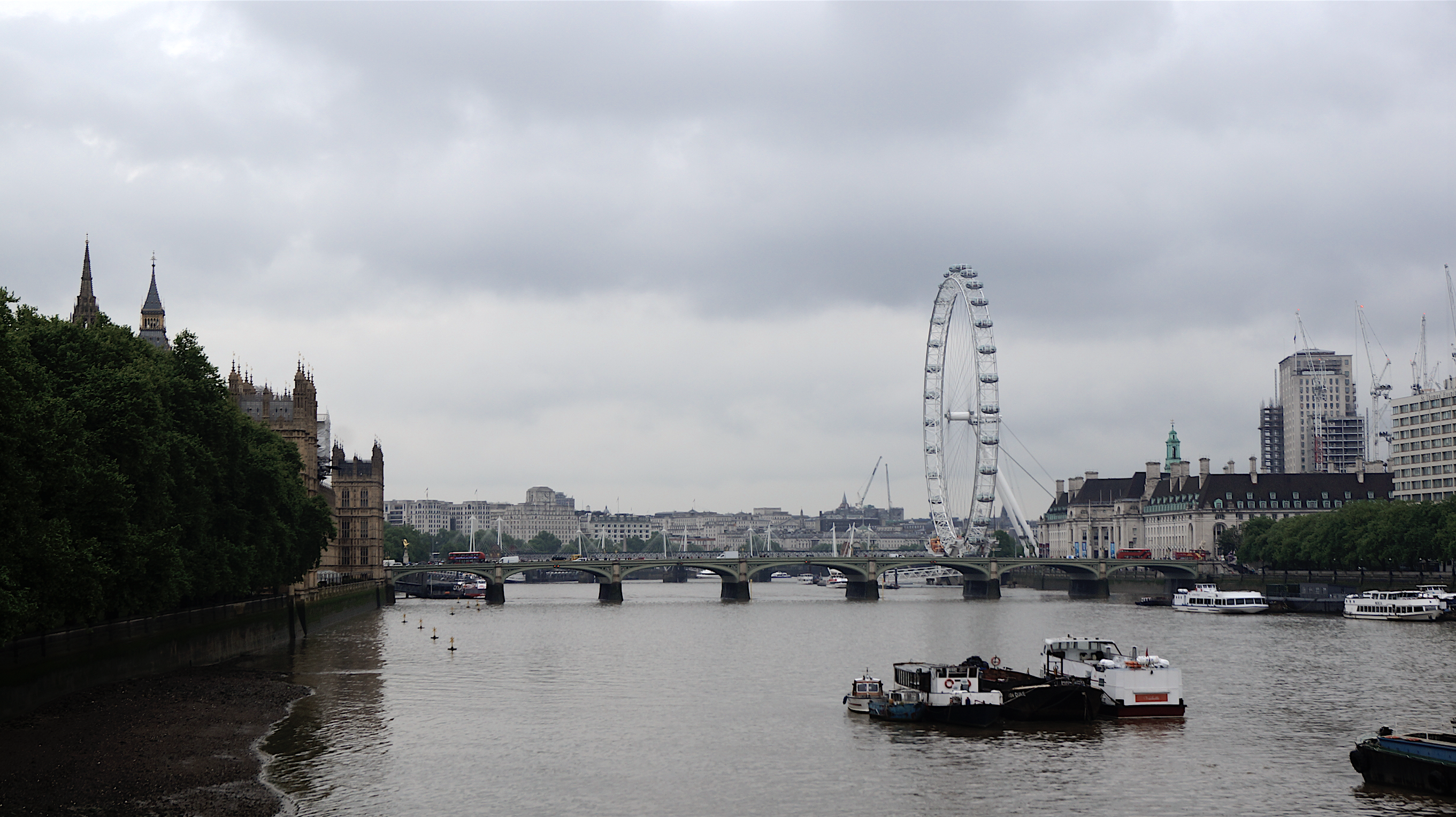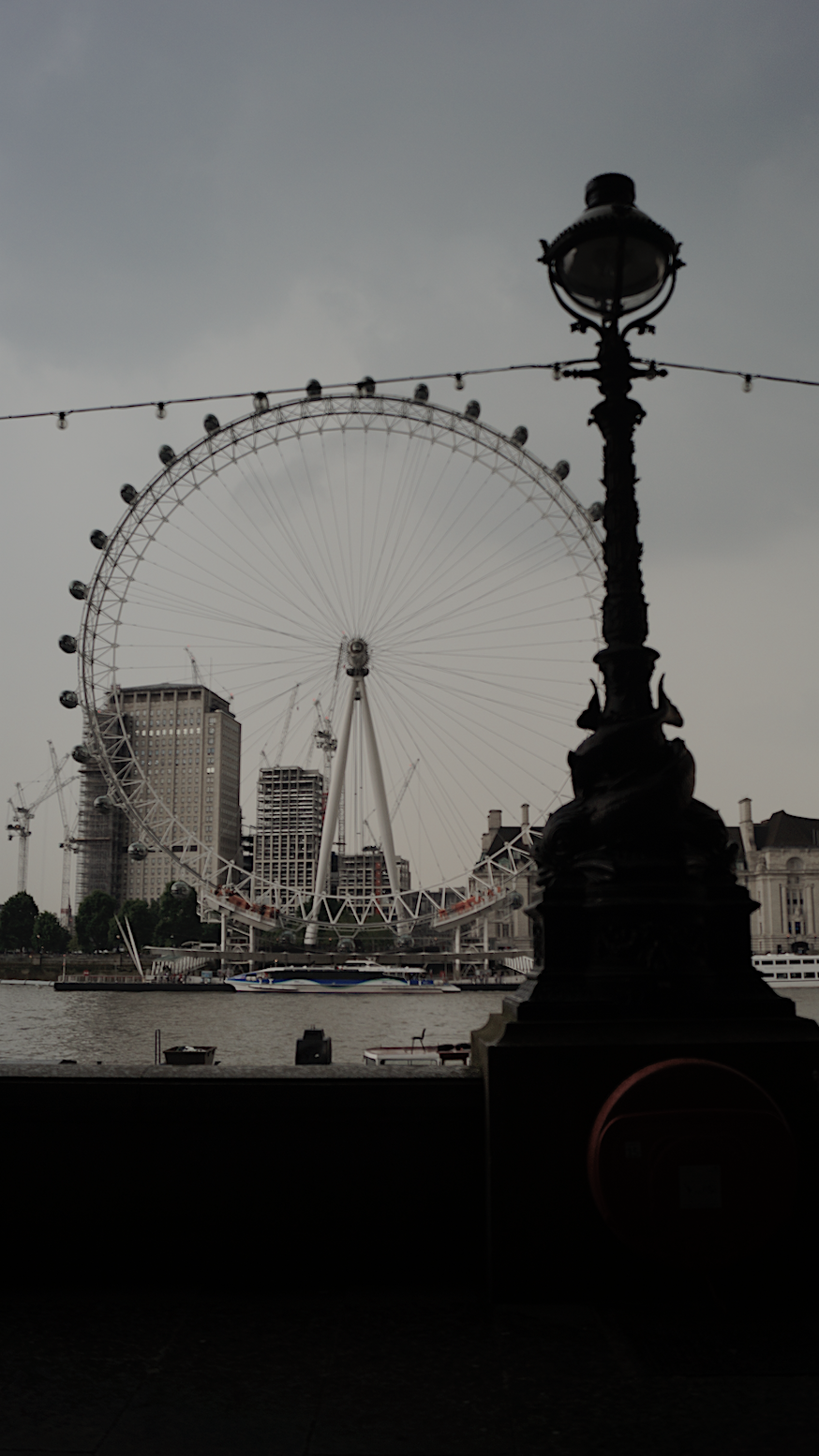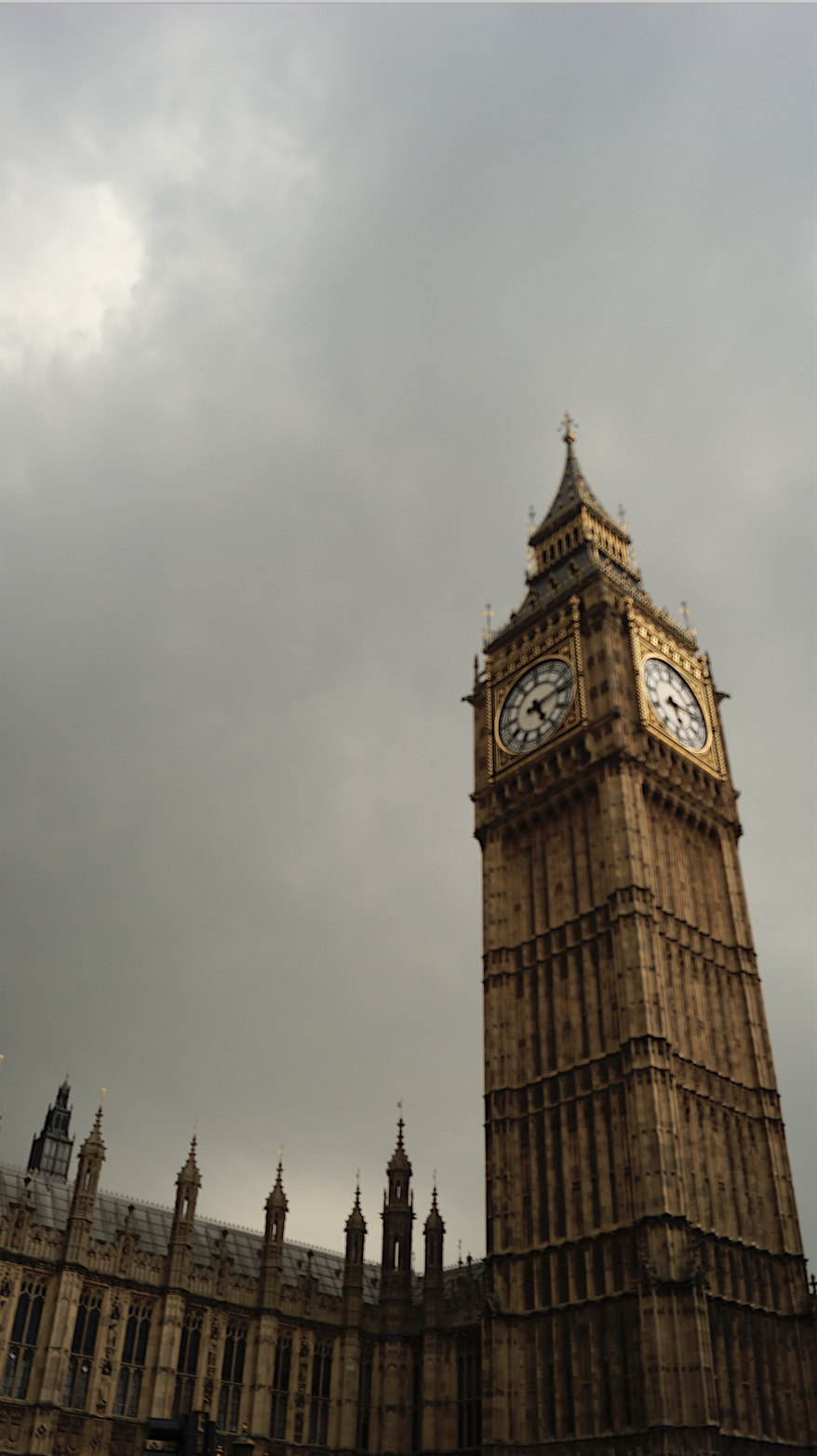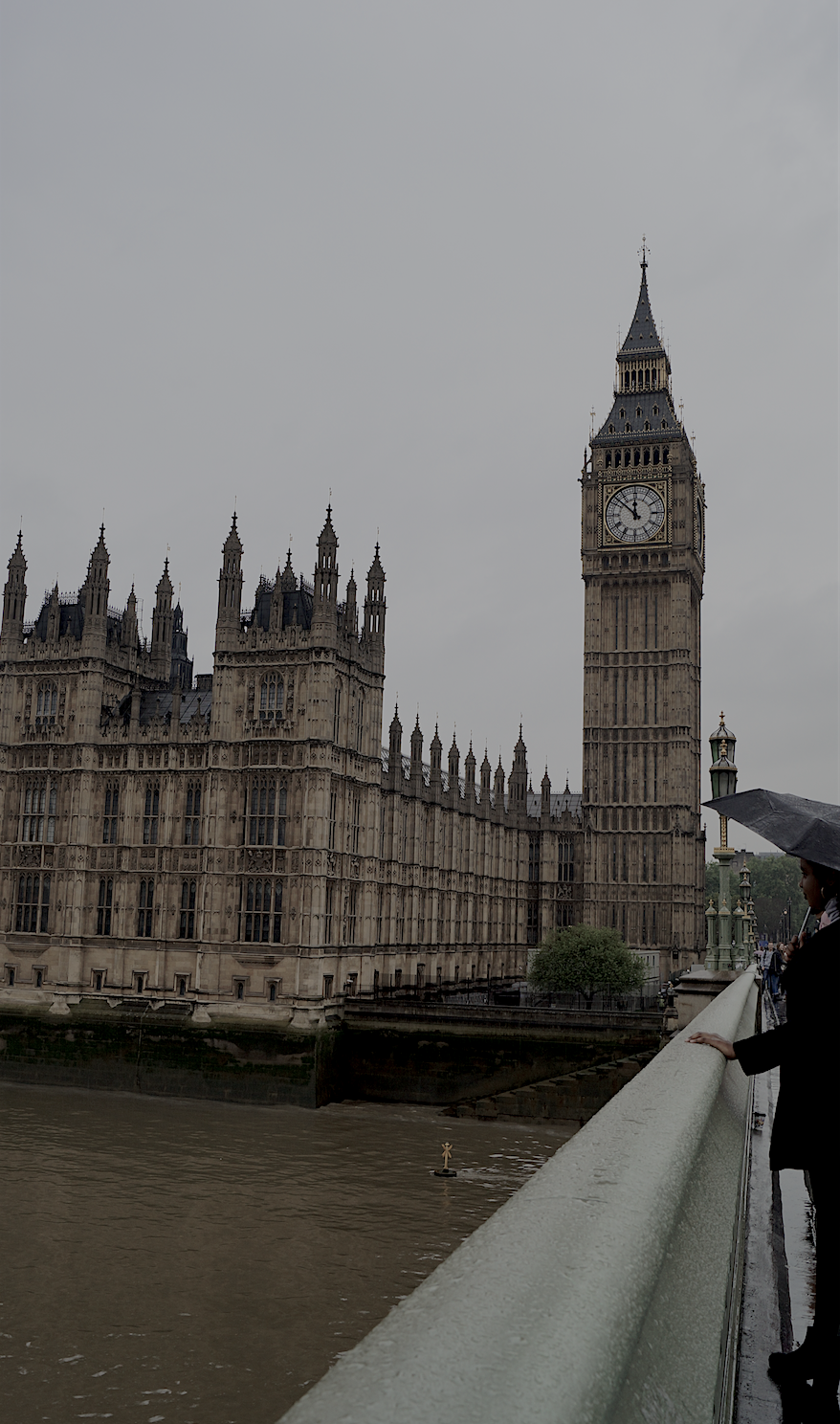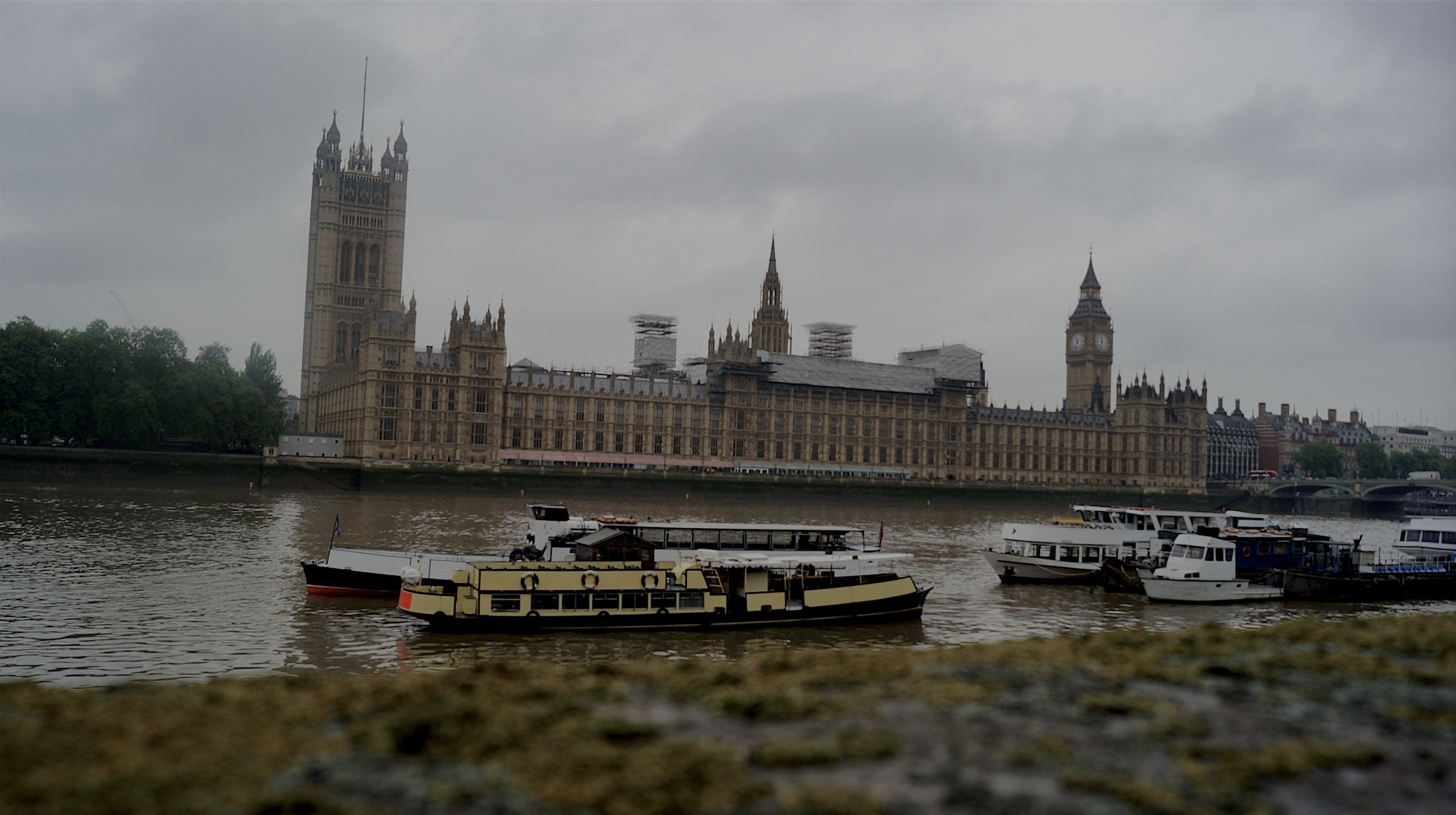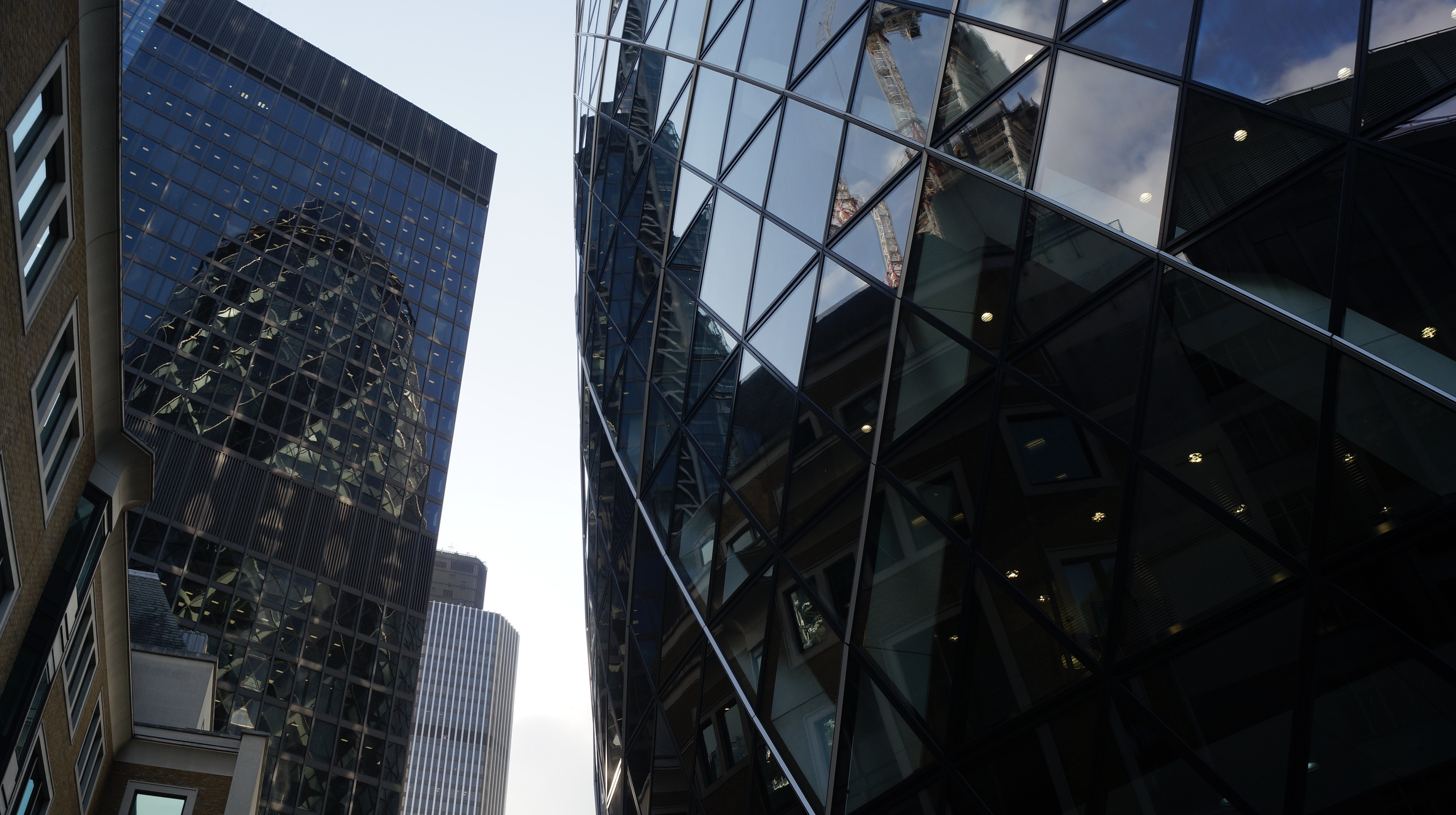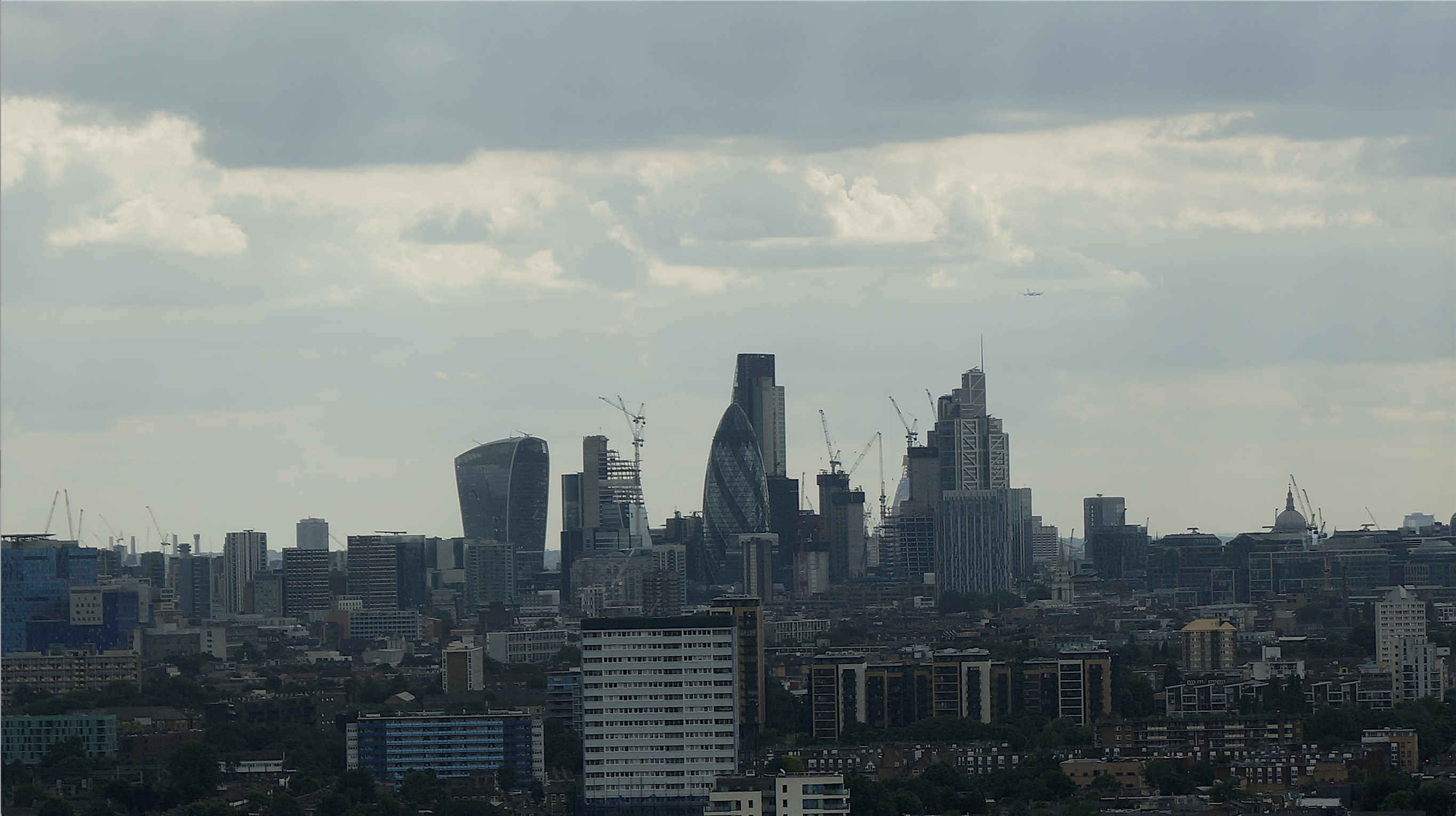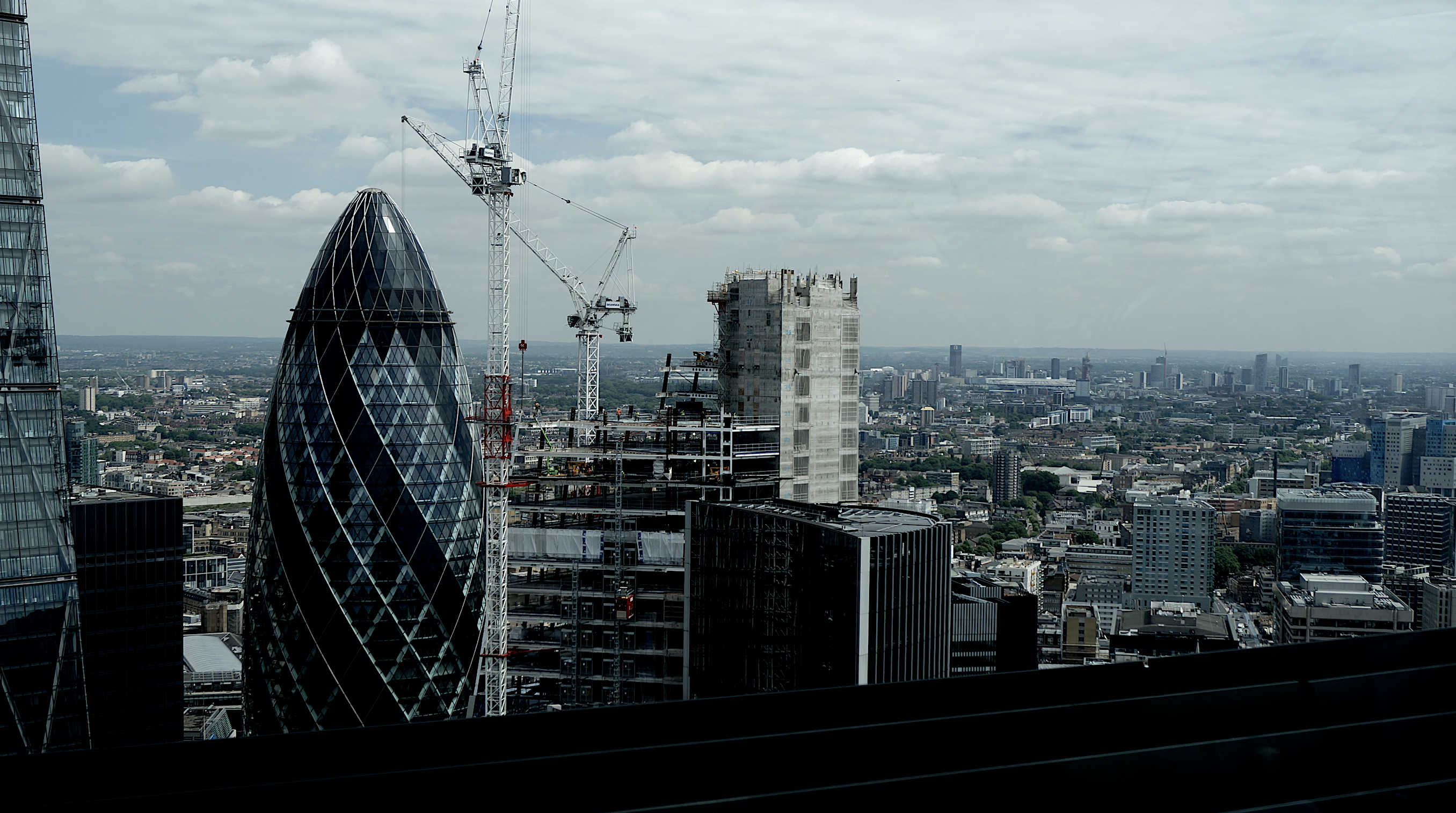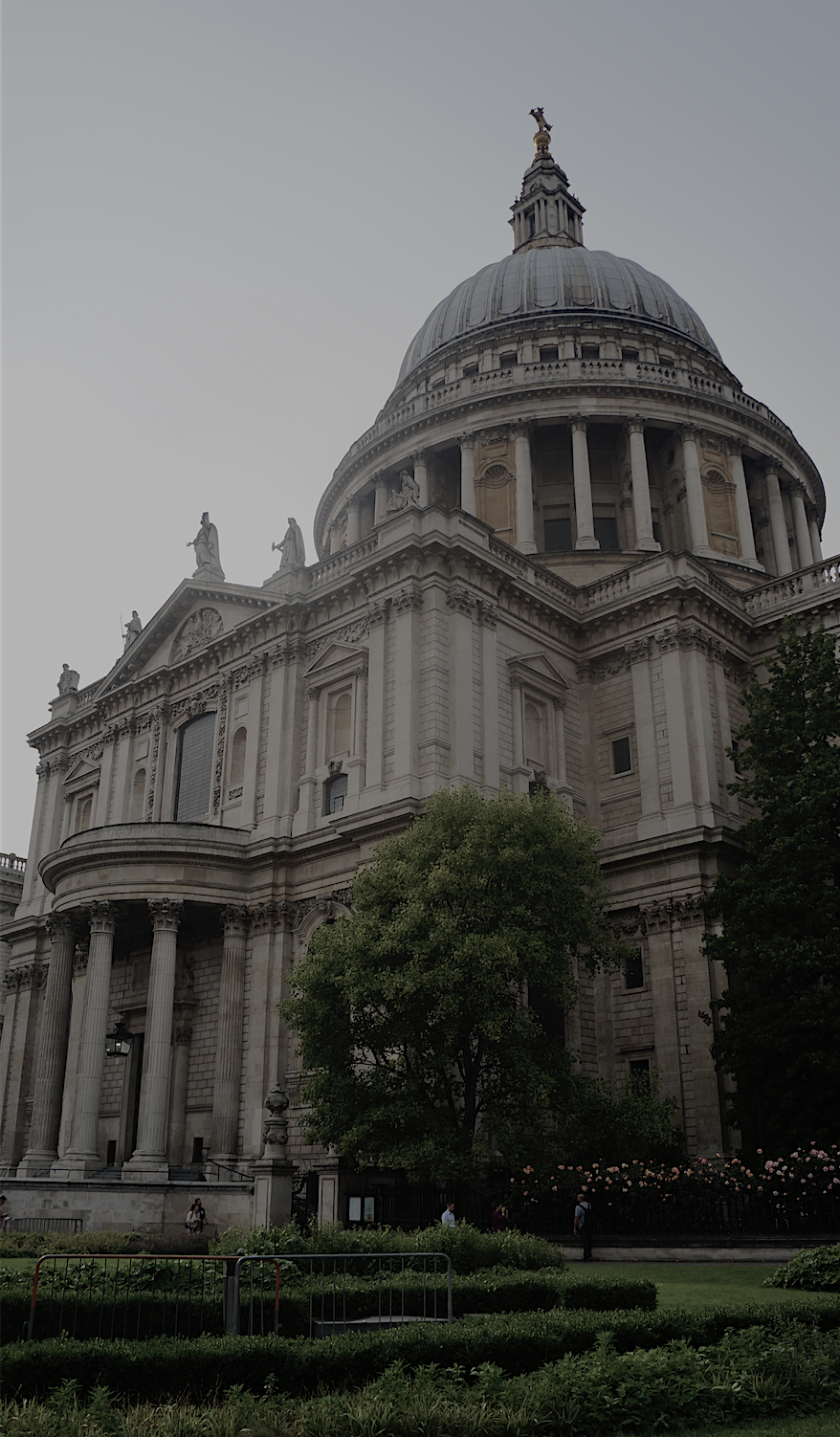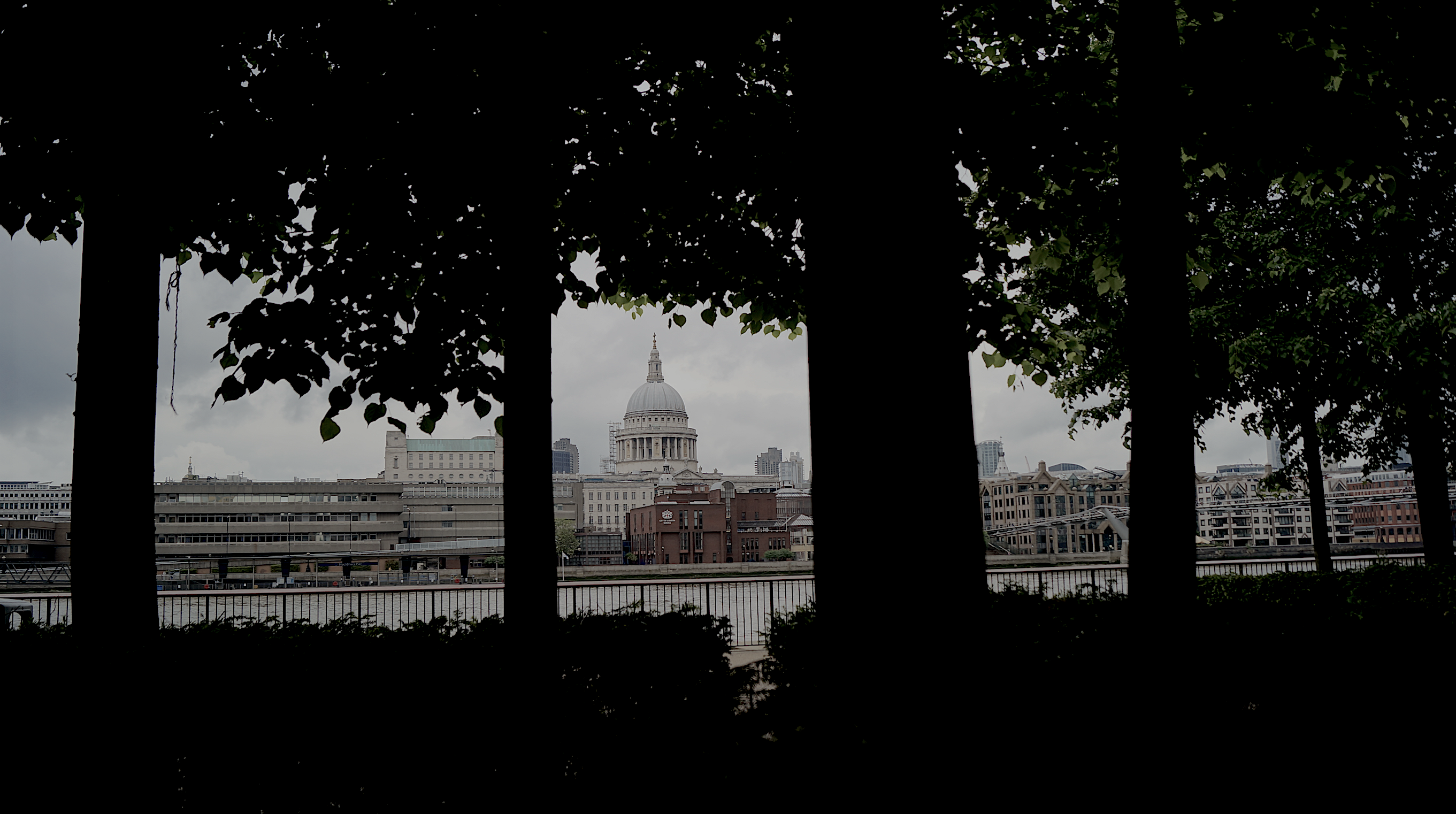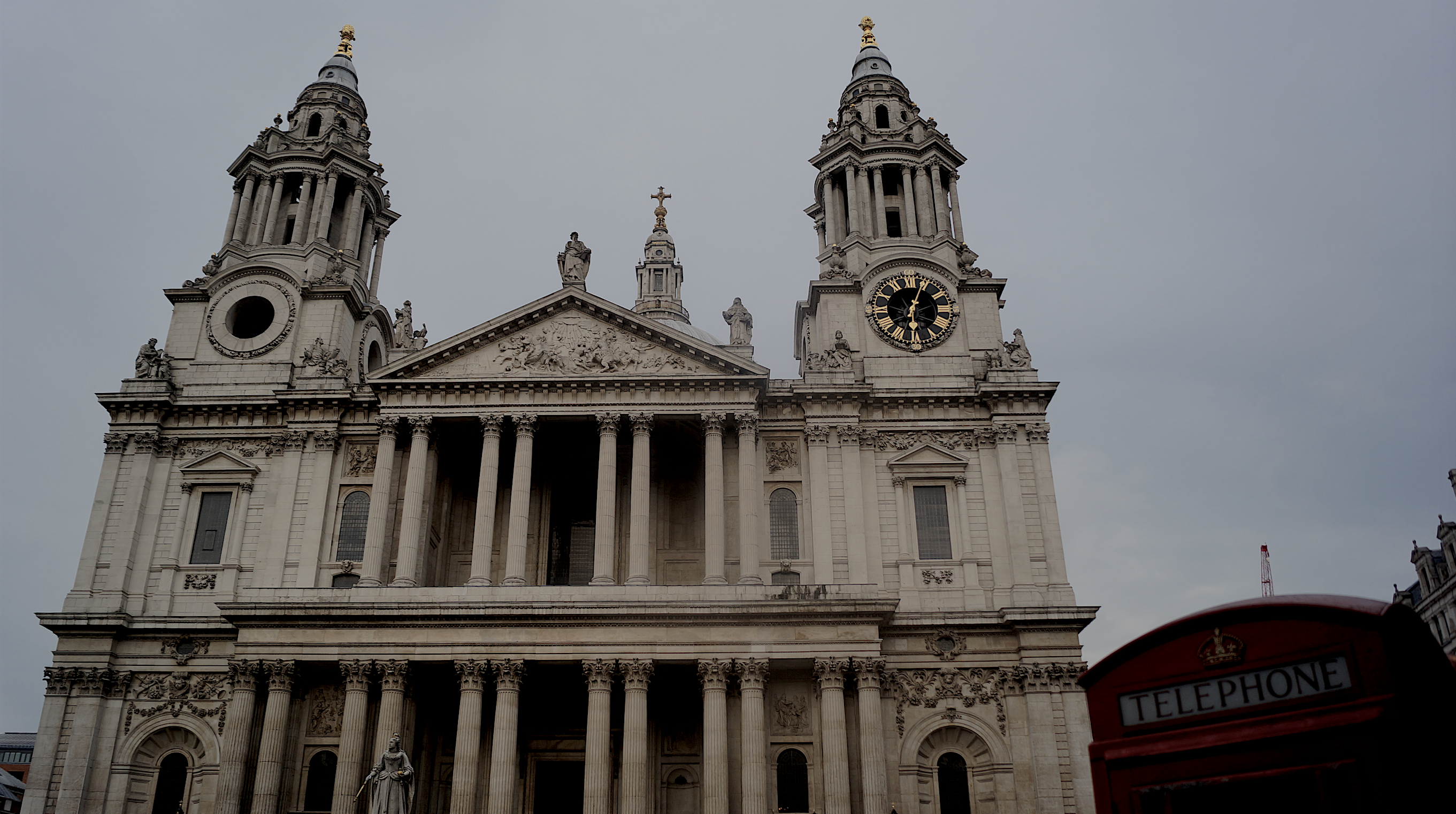Colourless London
From Londonhua WIKI
Colourless London
Abstract
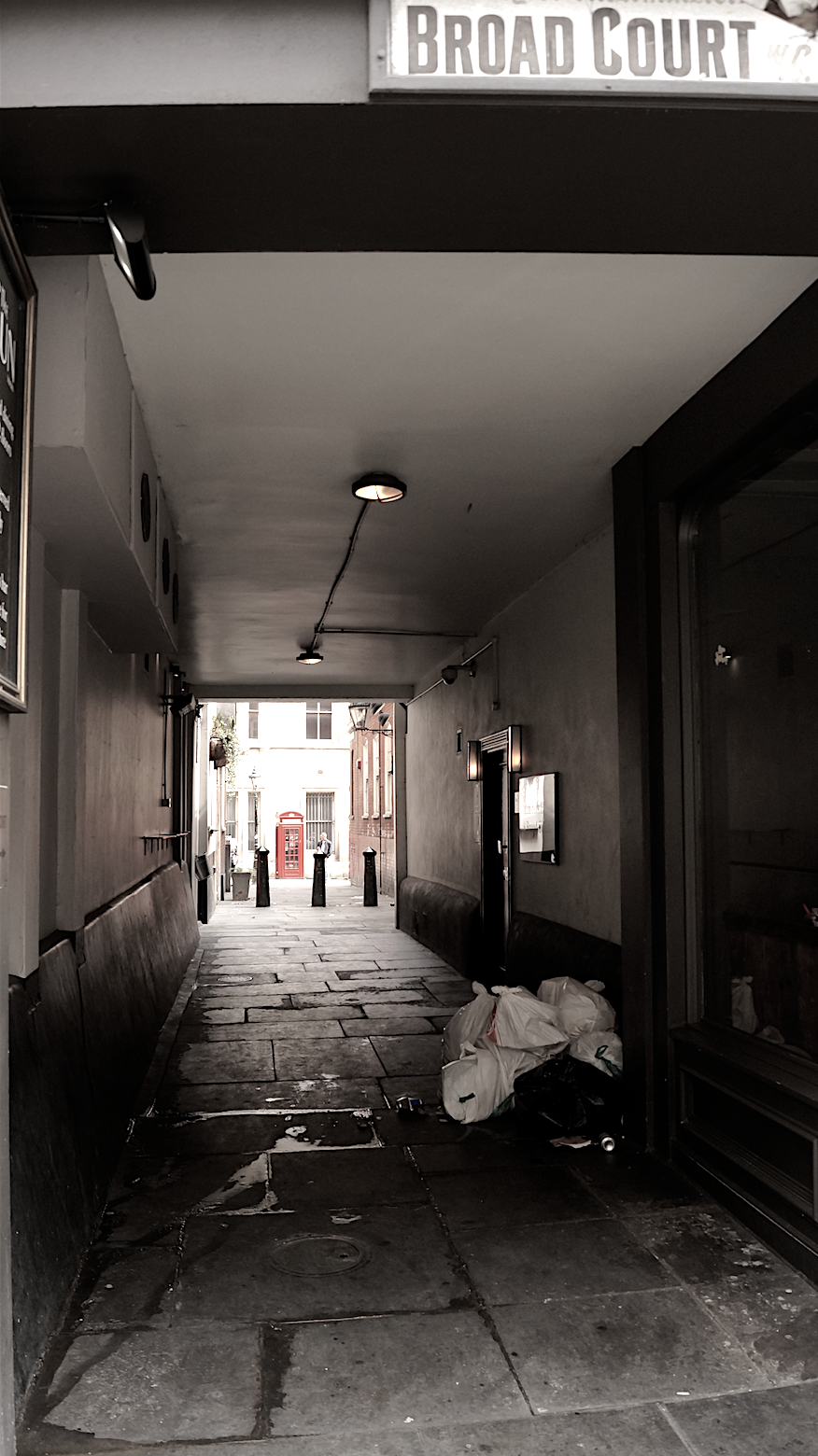 A dark way to light |
"A London Full of Colour" is a project that aimed to portray a different reality of the daily life of London citizens. By picturing different scenarios in their reality, comparing them to the reality that I choose for each one of them, the audience is able to admire the beauty and uniqueness of the city from a different perspective. I have gone to international poetry competitions and taken painting and photography courses before arriving to college. This project combines my favorite forms of expression through art and hopefully brightens the days of the viewers. The main message I wished to convey is that every single one of us chooses the reality they want to live in, meaning that the same place could be seen as a prison for our souls or a wonderland for our imagination. The goal of this Milestone, however, was to display London as it is and to capture through pictures emotions displayed by people living in London. Pictures were taken from different perspectives and represent feelings of an average citizen. In the same way, this Milestone explores the influence and relationship between the London weather and psyches of the Londoners.
Contents
Introduction
London is a "world city" that encompasses many cultures, religions, forms of governance and mindsets distributed across the ages that complete its history. London is a marvelous place full of corners to discover, however, since ages ago, it has been covered by an unwanted and sometimes disturbing presence; the fog. Caused by the Thames, the fires, the pollution and the filth, the fog has become part of the identity of the city of London, England. Emerging in the early nineteen century and covering several nearby towns, the London fog was both, a source of inspiration and fear. That is why, this Milestone is named "Colourless London", because despite the artistic component of the city was being used to its full potential by geniuses like Monet and Dickens as seen in the second Milestone of the project "A London Full of Colour" (Adding Pigment), the criminality rates were also rising due to the anonymity granted to many by the blurry fog. In other words, the fog added a sense of hopelessness and the citizens often felt helpless as if all the "colorful" things of their lives were being faded away by the fog. Whether it was an element of romanticism, mystery, or terror, the weather in London is an iconic representation of the relationship of how these kinds of conditions sometimes determine the identity of a city and the behavior of its population. In this Milestone this relationship and its social, cultural, and psychological repercussions are exposed through the background as the reader is invited to explore the history of the fog, to better understand the later creative component that is captured in the pictures taken of some of the most iconic and well-known sites in the city.
Section 1: Background
Weather in London
"The Central England Temperature (CET) monthly series, beginning in 1659, is the longest continuous temperature record in existence." [1]. The following pictures show the average temperature on the different seasons of the year of the United Kingdom since the sixties, this information was taken from a report published in 2009 titled "The climate of the United Kingdom and recent trends". The report took information mainly from the CET to construct the graphics over the years. According to this report, in terms of record warm individual days, 10 August 2003 saw the hottest ever maximum temperature in the UK; 38.5 oC at Faversham, Kent, exceeding the previous record in 1990 by 1.4 degrees Celsius. Though the temperature record does not go that far back, the growing of grapes in the medieval period has been used to imply that current warm temperatures in England have been experienced before, for the temperature of the fields is believed to determine the productivity of the harvests and the taste of the wines. However, Jones and Mann note in their article that “past vine growing in England reflects little, if any, on the relative climate changes in the region since medieval times”.[2] As seen in the images, there has been an increase in the temperature of the United Kingdom overall. Now, in terms of rain, annual mean precipitation over England and Wales has not changed significantly since 1766. Seasonal rainfall is highly variable, but appears to have decreased in summer and increased in winter, although with little change in the latter over the last 50 years. Severe windstorms around the UK have become more frequent in the past few decades, although not above that seen in the 1920s. The graphics that go from yellow to navy blue, show the degrees of precipitation (rain) all across the UK in the same period of time. In the Images it can be seen how much the temperatures varies from season to season as well as how it changes as years pass. [3]
The London Fog
The Source of the Issue
In most parts of the world, fog is seen as just a natural phenomenon, "clouding the air with small particles when the natural conditions are right" as said by Corton in his book, "The London Fog". The London fog was born by the early 1800s, "because of the increasing pollution of the air caused by the smoke coming out of the wood fires used for burning sea coal". [4] . Corton's book explains how small manufactories were all around the city and larger polluters accumulated near the rivers. Glass makers, breweries, potteries, tanneries and domestic coal fires, all contributed to the atmosphere of noxious fumes. In Corton's words, "The city's rapid expansion multiplied the number of domestic coal fires and mingled their smoke as it poured out into the atmosphere with the noxious emissions of factory chimneys and workshops in the early stages of the industrial revolution in the capital."[5] So then, according to the book "Dirty Old London", a battle to remove the fog began when in 1819, when Michael Angelo Taylor, demanded the Parliament to take action to mitigate the issue. In response to this, a select committee was formed to discuss if smoke was dangerous to health and if there was anything that could be done about it. Taylor put a lot of effort into his cause and brought to the sessions arguments that now are logical to us but, in that time, were absurd. Arguments like that factory owners should make adaptations and buy new machines and that this would "not only be beneficial to the city to to them as well", in a long term of course. According to the same book, he was also amongst the first to suggest that the black fog was "harmful to public health" and it "carried diseases". However, not everyone shared his point of view as manufacturers argued that smoke "only represented a minor inconvenience". Some even dared to claim that smoke "disinfected" the air from the smell of the drains and the horrible stink that probably emanated from the Thames River. Even Robert Angus Smith, who discovered acid rain in 1859 strongly believed that "tough the sulfurous acid contained in the smoke was capable of damaging buildings", it treated miasma. It is amazing how little they knew about what we see today as such a basic piece of information. The worst part was that as a result of these popular believes, Taylor had very little success in the parliament, however, he set a precedent and his claims were later supported by scientific data and medical evidence.[6]
Several others followed Taylor's steps with almost no success at all, until, according to the "London Fog" the Clean Air Act finally killed the fog in 1962.[7] According to an article published by the American Lung Association, thanks to the Clean Air Act, this year's "State of the Air" report found that the percentage of people that live in locations with high risk to their health due to air pollution decreased from 52 percent to 40 percent. "The progress in public health protections brought to us with the Clean Air Act have saved hundreds of thousands of lives." [8] However, even though the deathly London fog "died" with the Clean Air Act, it is something to take care of still today, because development and growth have not stopped and nobody would want them to. By the beginning of the year 2017, the news agency CNN released an article where they announced; "London breached its annual air pollution limits five days into the new year, Mayor Sadiq Khan said Friday.". The article explains that nitrogen dioxide is a gas emitted mostly by diesel engines that causes lung disease and respiratory problems and also that European Union law stipulates that "a maximum nitrogen dioxide concentration of 200 micrograms per cubic meter must not be exceeded for more than 18 hours over the year". Despite this, Brixton Road exceeded this limit since the first week of the year. [9]This only shows that the struggle that Londoners dealt with back in the nineteen century is still somewhat present today and there are still things that could be done to mitigate the issue of the London Fog.
Severity
In the book "Dirty Old London", it is emphasized how severe the problem of the fog started to become by the end of the nineteenth century. "The most wretched poor were passing on an ever-accumulating collection of physical and mental defects to their rickety children. This dark parody of Darwinian evolution gained great credence when thousands of young men new turned away for service in the Boer War on grounds of their poor physical condition. Smoke and fog were high amongst the possible culprits for what seemed a disturbing decline in physical strength."[10] Judging from the author's perspective, it is visible how the fog, besides causing physical damage to the citizens of London, became as well a social issue. For when the citizens of London came back from the war, the did not come back to the same life the used to have when they left and for most of them but must have been a very difficult situation to deal with as they struggled to join back into society.
The fog has also not been something exclusive for the poor to deal with as the queen Elizabeth I herself complained about the hideous fog according to the book "Writing on smoke" by Brimblecombe saying that she found "herself greatly grieved and annoyed with the taste and smoke of sea coals".[11] As the book "Dirty Old London" says, even the ladies of the upperclass were advised to wash their faces several times a day to remove the layer of soot that accumulated in the skin "if one lives in dear, dirty old London, or in any smoky city, three times a day is none too often"[12]. People had to "adapt" in some way to live with the presence of the fog, and though in the economical side, London was the very source of development for England and "a financial and mercantile hub for the world"[13], it was, at the same time, one of the most filthy capital cities the world has ever come to know, even today. This being often attributed to the rapid population growth between the eighteen and the nineteen hundreds. As said by George Sala in one of his books, as the population in London increased from about a million to over six million citizens, "suburbia replaced green fields, crushing up the country in its concrete grasp"[14]. As a result, the filth increased and with it, the diseases spread more rapidly and the fog turned the city into complete darkness for days during the winter times, which, at the same time, increased the criminality rates. The book "Dirty Old London" comments on how "the capital ended the century with the nickname of "The Smoke"- a city named after its most enduring pollutant." [15]
"The Doom of the Great City", a book published in 1880, also describes in great detail how the majority of central London was "choked to death" by toxic fog, and even further, how people cared very little about solving the problem: "Londoners were well accustomed to the inconvenience of fogs, and looked upon them in the light of a regular institution, not caring to investigate their cause with a view to some means of mitigating them." [16] However, as previously said, very little was known about the terrible consequences of long term exposure to the pollutants carried in the fog but as in more recent times, the facts started to appear in the news, it became impossible for the citizens tho not acknowledge the issue. For example, according to "London Fog", in a publication made by the news paper "The Times" on December 6th 1962, it says that "the total number of deaths from respiratory failure was now 55, compared with the usual rate of 6-8 rates in a two day period"[17] [18] With this is evident how severe the issue was and how urgent is was as well to solve it as soon as possible. Though the fight against pollution still goes on, we have made a huge progress and this can be seen by comparing our reality today to those kinds of articles in the news paper not so long ago.
From a Londoner's Perspective
Jack London said in 1903, "The color of life is grey and drab. everything is helpless, hopeless unrelieved, and dirty. The people themselves are dirty, while any attempt at cleanliness becomes howling farce, when it is not pitiful and tragic. Strange, vagrant odours come drifting along the greasy wind, and the rain, when it falls, is more like grease than water from the heavens."[19]. Reading this is not hard to understand how tired some Londoners must have of the filthiness and the fog. Watching such an impotent city swallowed by huge clouds of smoke must have been devastating. "Dirty Old London" talks about this as it says: "By the end of the (19th) century, the pall of smoke and fog over the metropolis seemed inescapable, and Londoners were resigned to its presence. Parliament would not act; householders were apathetic. Late-Victorian "degenerationists" argued that vitiated air and lack of sunlight were creating an underclass of slum-dwellers, atrophying in the darkness." [20] However, it was often commented by tourists that Londoners had grown used to living among the infamous filth and had learned to adapt to their circumstances, tolerating the presence of the fog, the hideous rotting smell and the mud of the river. This last thing forming from all the biological matter that was disposed to the waters of the Thames. In a book called "London by day and night" by David Bartlett he exemplifies how bad this was and how I affected tourism with the line: "An American town-bred lady would as soon think of swimming up the Thames against tide as walking far in such ankle-deep mud." [21] It was indeed disgusting and I can only imagine how puzzled tourists must have felt when visiting what they expected to e one of the world's most developed cities. Also, as mentioned in the book "Dirty Old London", in the diary of George Gissing, for January 1888, he complains about the fog in a most depressing way of manifesting his misery.
"Mond. Jan. 9. Hideous fog; bad cold...
Tuesday. Jan. 10. Fog still; cold worse...
Wed. Jan. 11. Fog denser than ever. Cold so much worse, had to lie up in house...
Thursd. Jan. 12. A terrible day; the fourth that we have not seen the sky.
Frid. Jan 13. Fog hanging about still, until 3 in afternoon. Then clearing...
Sat. Jan. 14. Black fog at noon, then cleared, and at night tanked heaven for showing its stars once more...
Thursd. Jan. 19. Cold and cloudy. Must be several weeks since it was a single gleam of sunlight." [22] [23]
How depressing it must have been for people back then to have to deal with the fog almost every day of the year. I was born in Southeast Mexico and grew up hearing stories about my cousins that lived in Mexico City, that is well known to have been one of the most polluted cities in the American Continent. I specifically remember one time when we were little and they did not believe me when I told them that rainbows actually existed. Because of the constant smoke that covered the skies in Mexico City they had never been able to admire the beauty of a rainbow shining in among the clouds after the rain. As I research about the London Fog and read more information about how people felt about it, the same feeling comes back to me as when I talked to my cousins as a kid.
Weather's Influence
People have always wondered how exactly does weather impact someone's mood. Is it possible that heat makes people more aggressive? Does rain makes people sad? Or is it just another of Hollywood's tools? How about cold temperatures? Some professors and psychologists claim to have the answer for some of these inquiries. An article published in 2008 states that several contributors found that weather’s daily influence has more of an impact on a person’s negative mood, rather than helping one’s positive mood. "Higher temperatures raise a person with a low mood up, while things like wind or not enough sun made a low person feel even lower." [24] This means that people are more heavily influenced in a negative way by weather than in a positive way. Likewise, researcher Marie Connolly found that women who were interviewed on days “with more rain and higher temperatures [reported] statistically and substantively decreasing life satisfaction, consistent with the affect results.” [25] This claim is something The Epoch Times agrees with, as it published "Humidity tends to make people more tired and irritable.
Barometric pressure fluctuations can alter moods and trigger headaches, some studies finding a link between low pressure and suicide. On rainy days, people report lower satisfaction with their lives.".[26]
Though the results of studies on the links between depression and rain are not entirely attributed to weather, because of all the factors that may influence, the relationship between weather and a person's mood should not be completely discarded either. This being said because there is a study from the same year named "The Effects of Weather on Daily Mood" that analyzed six weather parameters: temperature, wind power, sunlight, precipitation, air pressure, and photoperiod and compared them to mood. Combining these weather parameters, they found "no general tie to rainy or sunny days"; however, they did find "a slight correlation of the intensity of mood reported by each individual".[27] Which means that people tend to had their emotions feeling more intensified in extreme weather conditions such as too much sunlight or too much rain. Also, the rain often means that a person is more likely to stay in more and socialize less and this isolation just adds to the same depression. On an article posted y an organization named Health Guidance it is stated that "Socializing is actually one of the most powerful antidepressants of all and so is sunlight. Thus if someone is staying in he or she can often start to feel tired and low in terms of mood, and furthermore the lack of stimulation can arouse feelings of 'cabin fever' and frustration and even a further deficiency of vitamin D in extreme cases." [28]
 As provided by the Seasonal Affective Disorder Association in the United Kingdom |
And even though short term relationships between the weather and someone's emotions couldn't be stated, it has been proven that Seasonal Affective Disorder (SAD) is real and it affects people in the United Kingdom and Ireland because they are situated in the higher latitudes of the northern hemisphere."Without sufficient levels of morning light our bodies circadian rhythms are not triggered and our body fails to produce the hormones required to feel wide awake. During the day if we do not receive enough sunlight we feel sluggish, lethargic and low in energy and at night we stay awake long after darkness which can result in lack of sleep, disrupted sleep patterns and mood swings." [29] In summary, what the SAD organization in the UK meant boy saying that is that if a person does not receive sunlight at the correct times and in sufficient quantities, the symptoms of SAD are very likely to appear. They also warn that the symptoms of SAD recur regularly each winter and usually start between September and November, continuing until March or April and are as displayed in the image to the right.[30]
Just in the same way researchers have come to the conclusion that excessive rain is linked with feelings of discomfort and depression, it also has had to do with violent behaviors. "Researchers from the University of California at Berkeley analyzed 60 previous studies on U.S. violent crime rates, historical uprisings and empire collapses, recent wars and lab simulations testing police decisions of when to shoot" and what they found is that there is a link between violence and heat, as well as extreme rainfall. "For every standard deviation of change, occurrences of “intergroup conflict” rose by a whopping 14 percent, while instances of “interpersonal violence,” which includes rape and domestic violence, increased by four percent."[31] It has also been object of study the fact that crime rates increase during the summer months; according to the U.S. Department of Justice (DOJ) "A DOJ study revealed rates of serious violent crimes, household larceny and household property victimization are significantly higher in summer months.". [32] With all this facts it is impossible to neglect the existing relationship between weather and people. However it instantly rises the question of, to what extent? And, is there a way to revert it? While studies are still being conducted about these matters I think that the first step to become "immune" to it or revert it is definitely to become aware that it exists and acknowledge if we might be suffering from SAD.
Section 2: Deliverable
The Setting
In this Milestone, a variety of photographs were taken in order to illustrate the claims made in the background about the weather in London, England. As it is a great and enormous city, five places were chosen to represent it. Each one of these places represents in some way an aspect of the capital city and are explained in this section of the Milestone, followed by a gallery with the pictures taken in each place.
The Tower Bridge
The Tower Bridge is a bascule and suspension bridge on River Thames, right next to the London Bridge and being also the closest to the Tower of London from where it got its name. An article about famous bridges around the world tells the story of the birth of the idea of building this bridge as follows. In the late nineteenth century, East End of London reached so high commercial development that in the 1876, a “Special Bridge or Subway Committee” was formed to build a new crossing bridge over the Thames. About fifty designs were received, however, because a conflicts of interests, a design took eight years to be approved by the committee. The chosen design had been submitted by Sir Horace Jones in collaboration with John Wolfe Barry. The construction of the Tower Bridge began in 1886 and was completely done in 1894. The bridge connected Horselydown Lane, today Tower Bridge Road, with Iron Gate, today Tower Bridge Approach. "Five companies and 432 workers worked on it. It has 70,000 tons of concrete in foundations only and some 10,000 tons of steel and is covered in Cornish granite and Portland stone as means of protection for steel structure and as an esthetic element." [33]
Boy the time of its completion, the Tower Bridge was the largest and most sophisticated bridge ever made. [34] A masterpiece of engineering and architecture, the Tower Bridge was chosen as one of the five most representative landmarks in London for various reasons. The Tower Bridge represents the development and continuous growth of the city, adapting to new technologies to satisfy the needs of its population "the city's dynamic economy generates a high level of development activity"[35]. Also, this landmark is not only a very important touristic spot in the city but also an icon for its citizens; people that grew up in London since the late eighteen hundreds have seen its birth and development and it has stood firm through all these years as a majestic and working superstructure. Also, it seems relevant to note that the main picture of the collection shown below was taken from the London Bridge just days before the terrorist attack.
The London Eye
The London Eye, also known as the Millennium Wheel, is located on London’s Southbank, and holds the title of the world’s largest observation wheel and most popular paid tourist attraction in the whole country. The wheel itself has a diameter of 120 meters and offers some of the greatest panoramic views of the city, stretching as far as 25 miles. It has 32 capsules, each symbolizes London’s 32 boroughs and they are numbered 1 to 33, eliminating the thirteenth carriage for good luck. The London Eye attracts approximately 15,000 visitors a day and has won more than 40 awards for "its significant contribution to London’s tourism and architectural landscape".[36] The architectural design process of the London Eye was a collaborative work between several minds and talents; different architects are credited with the design of the London Eye. The primary individuals cited as the architects of the London Eye are Frank Anatole, Julia Barfield, Steven Chilton, Nic Bailey, Malcolm Cook, Mark Sparrowhawk, and David Marks.For its construction, the individual components for the wheel were floated up the River Thames and were assembled flat on the ground before being raised. Then the pieces were lifted up by using a strand jack system and once the wheel was constructed, there were varying stages of lift undertaken. The first stage brought the wheel up to only a 65 degree position and left the wheel like that for over a week. This allowed the engineers to prepare the foundation in a more durable fashion. The total weight of the entire London Eye is 1,700 tonnes and was created out of materials that were manufactured by European Union members. [37]
This site was chosen because it represents London as a top touristic destination for people all around the globe. A great people for people to visit and even stay, the city of London is home for a blend on many cultures and ideologies and is viewed as a world city. The iconic nature of the attraction makes most tourists flock to the wheel when they visit London for the first time. This landmark attracts visitors from all around the world and has transformed London’s landscape standing today as "a national symbol that celebrates Britain’s innovation and technological success in the 21st century".[38] The London Eye is not only the largest, and arguably the most famous, observation wheel in the world, but also maintains an important role in maintaining the touristic flow in London. It is an icon of the importance of tourism to this country's economy rather than merely being a "commemorative structure to celebrate the new millennium", as it was originally conceived. Even BBC News considers how it to represent one of the UK capital's major symbols.[39]
The Big Ben
Unlike many people believe, "Big Ben" is the nickname given to the Great Bell of the clock of the Palace of Westminster in London. The story of the Big Ben starts when the original Palace of Westminster was destroyed in 1834 by a terrible fire. After this terrible tragedy, several architects and designers were invited to submit proposals for the new palace. More than 400 designs were submitted by more than 90 architects and Sir Charles Barry was chosen by a committee set up specifically for this issue. However, according to an article published by The London News, his design did not feature a clock tower. "Barry turned to Augustus Pugin for the design of the tower and it was added to the plan later in 1836. But as he was not a professional clockmaker, Edward John Dent was appointed to build the clock following the design of clock maker Edmund Beckett Denison." Then, when Dent died, his stepson is known to have finished the work. Apart from many complications and mistakes during the design, construction and collocation of the bell in 2009, the Big Ben celebrated its 150th anniversary.[40] [41]
The Big Ben represents the parliament, and the parliament represents the government and all the forms of governance this city has gone through since being a roman city at its beginnings. In the development of any city the most relevant and influential component is its government, which is why this Milestone had to represent the one of London through the Big Ben. Besides, the Big Ben is, without a doubt, one of the most famous symbols of the city and people can be seen everyday at any time taking "the Big Ben selfie" all across the bridge.
The Gherkin
30 St. Mary Axe, better known as "the Gherkin" or "the cucumber" is London’s most instantly recognisable tower, after the Big Ben, of course. The official website of the Gherkin describes it as follows: "Totalling 500,000 sq ft, The Gherkin is an iconic structure housing a flourishing community and it deserves its reputation for being ‘the most civilised skyscraper in the world’."[42] Besides its use for business, it is an astonishing piece of art and a gem of modern architecture as "the triangular panels create a complex of colour and shade and at the bottom of the skyscraper", as said by the news paper "The Guardian". [43] And though it's rumored that its architect regrets his design, Londoners and tourists find the contrast it makes with the rest or the city's architecture, fascinating. The Gherkin didn't win the Stirling Prize, the London Region Award, and the Emporis Skyscraper Award for nothing. It truly represents the goal of modern design in an attempt to bring the classical city of London to the present.
The Gherkin is recognized as one of the more distinctive skyscrapers in the financial district of London. According to the official website of "The City of London": "The UK's financial services sector as a whole made a total tax contribution of £71.4bn in the taxes in the year to March 2016, equivalent to 11.5% of total UK government tax receipts. This figure includes taxes paid, as well as taxes collected, by the sector. The financial services sector employs over 1.1 million people, representing 3.4% of the UK's total workforce."[44] The Gherkin represents the city's economic growth and workforce, which continues to lift the United Kingdom as one of the most influential countries in the world. It is a monument and a mirror that makes tourists and locals see London in a new way.
St. Paul's Cathedral
Being a place for Christian worship for over four hundred years, Sir Christopher Wren's St. Paul's Cathedral stands as the most iconic church in all Britain. The medieval Cathedral, with a tower and spire soaring above the city, was at the time one of the wonders of Europe. St Paul was built after the Fire of London of 1666, its dome with the ball and cross above it symbolic of London's strength and resistance mainly throughout the terrifying, destructive bombings of the Second World War. However, it was not until about ten years later that a scheme for complete rebuilding was finally approved. As stated in the book "A guide to the cathedrals of Britain", "Wren had made several other designs including that illustrated by the so-called Great Model still in the cathedral. When it came to the building of the Cathedral, he insisted on having a much freer hand, so the final product was just a resemblance of the original design." [45] It was completed in 1710, when Wren was seventy-eight years old, and by the final stages of construction, he was carried to the dome because he was unable to take the stairs. There are infinite features to be referenced about St. Paul's Cathedral; in fact several books have been filled with its history, however, it was chosen for this milestone not only for its physical beauty but because it conveys a higher message.
St. Paul's Cathedral represents the change in beliefs of the whole country that generated much controversy all over Europe and took origin in this very city under the rule of Henry VIII and lead mainly by Cromwell. It represents the power that lies in all English people and the audacity of its governance, as well as the communion of all the religions of the world that lay in the hearts of all the newer generations of Londoners. From the outside St. Paul's stands with all its might and power and from the inside it is awe-inspiring, breathtaking, unlike any other cathedral or church built in Britain. Plus, this magnificent church has dominated the London skyline for hundreds of years, and has seen the city change without recognition. As the author Ann Saunders introduces one of her books, "the cathedral lies at the heart of London and - in so many ways - in the heart of the nation". [46]
Conclusion
In this Milestone it is first studied the change in weather patterns through the past years, seeing the impact of global warming and contamination which, though it does not show the results we would prefer, we can conclude we are with a better panorama than what it could have been without the Clean Air Act. Later in the background, the issue of the London Fog is raised and explained with little detail, as it is a really interesting, yet long story of continuous strikes from worried citizens and skeptical policymakers. The way in which, in this story, policy makers did not believe the points brought to them because of their lack of knowledge, raises the question, "is there any chance this may be happening now?". Later in the background, I tried to revive in the readers the feelings of impotence felt by the citizens trapped in their own contamination, some guilty, some innocent, but all victims of its consequences. Driven by their situation some stood up to fight for a better future for London, which we can certainly see today. However, still today, the leftovers of those dark years, when London was covered with the hideous smog, continue to affect the culture of Londoners, causing, in extreme cases, Seasonal Affective Disorder because of the lack of sunlight and the unintended isolation. Yet, the physical wellbeing is not only at risk in terms of vulnerability to diseases, because, as portrayed at the end of the background, the weather also may have a link with the raise of criminality rates is some cities of the world. This discoveries should be things everyone knew, as they could be avoided in the future as other researchers and policymakers become aware of them and work to mitigate the issues.
The deliverable chooses five emblematic sites of the city to represent it in the best way possible. It gives the reasons for each one of them and provides little information about the history of each place, in some cases, with further linkage to articles in the wiki that refer specifically to them individually. I took pictures from four different perspectives of each one of the places to illustrate the panorama shared by the citizens every day and the captions of each picture represent the feelings and emotions conveyed in the background as if they were voices from the Londoners. It may be sad to look at some of them, as all the pollution is our own doing and we all know that is not how the sky and the water are supposed to look. We are now suffering for the errors made by people from the past, but it is on us to make it better. We can be remembered as the generation that changed the course of our world. As the kids that learned to love the planet, adolescents that worked to make a better world for their children and as the adults that raised better children for the world. Though it may still seem "colorless", in the following Milestones Adding Pigment and Colourful Reality, the research goes further in depth to how this monochromatic view has affected diverse types of art and how different authors have used it in their work.
References
- ↑ Manley, G., 1974: Central England Temperatures: monthly means 1659 to 1973. QJR Meteorol Soc, p. 100, 389-405.
- ↑ Jones, P.D. and Mann, M.E., 2004: Climate over past millennia. Rev Geophys, 42, RG2002.
- ↑ Jenkins, G.J., Perry, M.C., and Prior, M.J. (2008). The climate of the United Kingdom and recent trends. Met Of ce Hadley Centre, Exeter, UK.
- ↑ Corton, C. L. (2015). London Fog: the biography. Cambridge, Massachusetts: The Belknap Press of Harvard University Press. p. 1.
- ↑ Corton, C. L. (2015). London Fog: the biography. Cambridge, Massachusetts: The Belknap Press of Harvard University Press. p. 1.
- ↑ Jackson, L. (2014). Dirty Old London. New Haven: Yale University Press. p. 212-237
- ↑ Corton, C. L. (2015). London Fog: the biography. Cambridge, Massachusetts: The Belknap Press of Harvard University Press. p. 1.
- ↑ Kim Lacina | April 21, 2017 (Last Updated: May 3, 2017). (n.d.). The Air We Breathe. Retrieved May 20, 2017, from http://www.lung.org/about-us/blog/2017/04/the-air-we-breathe.html
- ↑ Cullen, S., & Roberts, E. (2017, January 6). London breaches annual air pollution limits in first week of 2017 (CNN, Ed.). Retrieved May 20, 2017, from http://edition.cnn.com/2017/01/06/health/london-air-pollution/index.html
- ↑ Jackson, L. (2014). Dirty Old London. New Haven: Yale University Press. p. 212-237
- ↑ Brimblecombe, P. "Writing on smoke", Writings on the History and Culture of Pollution, ed. Hannah Bradby (London: Earthscan, 1990), p. 93-113.
- ↑ "The Face and Complexion", Weekly Standard and Express, April 2 1898
- ↑ Jackson, L. (2014). Dirty Old London. New Haven: Yale University Press. p. 1.
- ↑ Sala, G., The great invasion, Household Words (April 1852), p.73.
- ↑ Jackson, L. (2014). Dirty Old London. New Haven: Yale University Press. p. 4.
- ↑ Hay, W. D. (1880). The Doom of the Great City, London: Newman & Co, being a narrative of a survivor, written A.D. 1942.
- ↑ The Times, 6 December, 1962, p. 12, col C.
- ↑ Corton, C. L. (2015). London Fog: the biography. Cambridge, Massachusetts: The Belknap Press of Harvard University Press. p. 318.
- ↑ London, J. (1903). The People of the Abyss. New York.
- ↑ Jackson, L. (2014). Dirty Old London. New Haven: Yale University Press. pp. 212-237
- ↑ Bartlett, David W., London by day and night, [London}, 1852.
- ↑ George Gissing's Diary, quoted in Pierre Coustillas, London and the life of literature in Late Victorian England, Hassocks: Harvester Press, 1978, pp. 19.
- ↑ Jackson, L. (2014). Dirty Old London. New Haven: Yale University Press.
- ↑ Denissen, J.J.A.; Butalid, Ligaya; Penke, Lars; van Aken, Marcel A. G. (2008). The effects of weather on daily mood: A multilevel approach. Emotion, 8, 662-667.
- ↑ Connolly, M. (2013). Some like it mild and not too wet: The influence of weather on subjective well-being. Journal of Happiness Studies, 14, 457-473..
- ↑ Haslam, N., & University of Melbourne. (2016, March 17). Here Comes the Sun: How the Weather Affects Our Mood. Retrieved May 21, 2017, from http://www.theepochtimes.com/n3/1989415-here-comes-the-sun-how-the-weather-affects-our-mood/
- ↑ J. D.; L. P.; L. B.; M. A. The Effects of Weather on Daily Mood: A Multilevel Approach. The Effects of Weather on Daily Mood: A Multilevel Approach, https://www.psychologie.hu-berlin.de/de/prof/perdev/pdf/2008/denissen_weather_mood_2008.pdf.
- ↑ Loewen, S. C. (n.d.). Effects of Weather on Human Emotions. Retrieved May 21, 2017, from http://www.healthguidance.org/entry/15843/1/Effects-of-Weather-on-Human-Emotions.html
- ↑ What is SAD? (n.d.). Retrieved May 21, 2017, from http://www.sad.org.uk/
- ↑ The Seasonal Affective Disorder Association in the United Kingdom. (2016, September 1). Symptoms of Seasonal Affective Disorder. Retrieved May 21, 2017, from http://www.sada.org.uk/symptoms_2.php
- ↑ Gregoire, C. (2014, January 14). The Surprising Ways The Weather Affects Your Health And Well-Being. Retrieved May 21, 2017, from http://www.huffingtonpost.com/2014/01/14/climate-health_n_4568505.html
- ↑ Lauritsen, J. L., & White, N. (2014). U.S. Department of Justice Of ce of Justice Programs. Seasonal Patterns in Criminal Victimization Trends. Retrieved May 21, 2017, from https://www.bjs.gov/content/pub/pdf/spcvt.pdf.
- ↑ "Facts and History of Tower Bridge in London." Tower Bridge - Facts and History of Tower Bridge in London. N.p., n.d. Web. 30 May 2017. <http://www.bridgesdb.com/bridge-list/tower-bridge/>
- ↑ "Tower Bridge Exhibition." Tower Bridge History | Historic Bridges London. N.p., n.d. Web. 30 May 2017. <http://www.towerbridge.org.uk/bridge-history/>
- ↑ "Development." Development - Development and population information - City of London. N.p., n.d. Web. 30 May 2017. <https://www.cityoflondon.gov.uk/services/environment-and-planning/planning/development-and-population-information/Pages/development.aspx>
- ↑ Hill, M. (2016, April 13). The History Of The London Eye In 1 Minute. Retrieved May 30, 2017, from https://theculturetrip.com/europe/united-kingdom/england/london/articles/the-history-of-the-london-eye-in-1-minute/
- ↑ Design Book Magazine. (n.d.). London Eye. Retrieved May 30, 2017, from http://www.designbookmag.com/londoneye.htm
- ↑ Hill, M. (2016, April 13). The History Of The London Eye In 1 Minute. Retrieved May 30, 2017, from https://theculturetrip.com/europe/united-kingdom/england/london/articles/the-history-of-the-london-eye-in-1-minute/
- ↑ Akwagyiram, A. (2005, May 21). UK | England | London | The history of the London Eye. Retrieved May 30, 2017, from http://news.bbc.co.uk/1/hi/england/london/4569123.stm
- ↑ Gill, J. (2016, March 22). The History Of Big Ben In 1 Minute. Retrieved May 30, 2017, from https://theculturetrip.com/europe/united-kingdom/england/london/articles/the-history-of-big-ben-in-1-minute/
- ↑ London News. (n.d.). THE BIG BEN STORY. Retrieved May 30, 2017, from http://bigbenfacts.co.uk/story/index.html
- ↑ The Gherkin, London. (n.d.). Retrieved May 31, 2017, from http://www.thegherkinlondon.com/
- ↑ Jones, J. (2004, October 18). The Gherkin is a triumph of architecture as sculpture. Retrieved May 31, 2017, from https://www.theguardian.com/artanddesign/2004/oct/18/architecture.regeneration
- ↑ PwC and City of London, Total Tax Contribution of UK Financial Services (ninth edition), December 2016
- ↑ New, A. S. (1981). A guide to the cathedrals of Britain. London: Constable.
- ↑ Sanders, A. (2001). St. Paul's (E. Drury, Ed.). London: Collins & Brown Limited.












